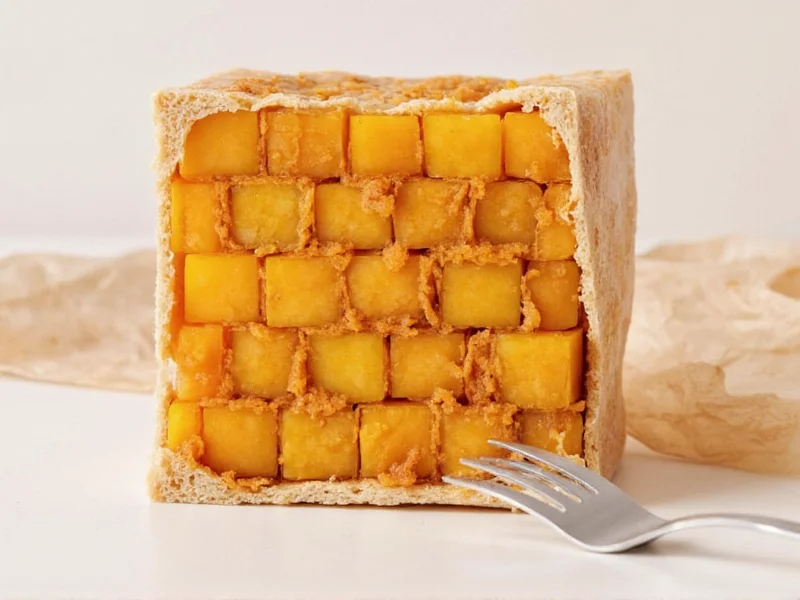When searching for efficient meal prep solutions, many home cooks discover the practical benefits of the Souper Cube system. Unlike traditional round containers that leave wasted space in freezers, the square design of these food storage cubes maximizes storage capacity while maintaining structural integrity at freezing temperatures. The standard Souper Cube typically holds 16 ounces (2 cups) of liquid, making it ideal for single-serving portions of soup, broth, or sauces.
Understanding Souper Cube Design Features
The engineering behind effective square soup storage containers addresses multiple pain points in food preservation. The rigid plastic construction prevents container deformation when frozen, while the secure locking lids create an airtight seal that prevents freezer burn and odor transfer. Most models feature graduated measurement markings on the interior walls, allowing users to precisely fill containers to desired portion sizes without needing additional measuring tools.
Material composition significantly impacts performance. High-quality Souper Cubes use food-grade, BPA-free plastic that withstands temperature extremes from freezer to microwave without leaching chemicals or warping. The square geometry isn't merely aesthetic—it creates 20-30% more efficient freezer organization compared to cylindrical containers, as cubes nestle together without wasted airspace.
Practical Applications in Meal Preparation
Professional meal preppers and home cooks alike utilize Souper Cubes for various culinary applications beyond basic soup storage. The portion control food storage system excels at:
- Batch cooking and freezing individual meal components
- Storing homemade stocks and broths for immediate use
- Organizing sauce components for complex recipes
- Preparing freezer meals with precise ingredient portions
- Safely storing breast milk or baby food portions
When properly filled (leaving appropriate headspace for liquid expansion during freezing), these freezer meal prep containers maintain food quality for up to six months. The microwave-safe design allows for direct reheating without transferring contents to another vessel, reducing dish cleanup while preserving flavors.
| Feature | Benefit | Ideal For |
|---|---|---|
| Square Design | 30% more efficient freezer organization | Small kitchen spaces |
| 16-Ounce Capacity | Perfect single-serving portions | Lunch preparation |
| BPA-Free Material | Safe food contact at all temperatures | Family meal planning |
| Stackable Construction | Stable vertical storage | Deep freezer organization |
Comparison with Alternative Storage Methods
When evaluating stackable food storage cubes against traditional options, several advantages become apparent. Glass containers, while microwave-safe, are heavier and more prone to breakage when frozen. Plastic bags, though space-efficient, lack structural integrity and can develop micro-tears that compromise food safety. Round plastic containers create significant wasted space in freezers due to their geometry.
The optimal meal prep containers for soups balance durability, space efficiency, and safety. Souper Cubes address the specific challenges of liquid storage that generic containers often fail to solve. Their rigid walls prevent the "container collapse" common with flexible freezer bags, while the square shape eliminates the air pockets that develop between round containers.
Best Practices for Using Souper Cubes
Maximizing the effectiveness of your square soup storage containers requires following several key practices:
- Proper Filling: Leave 1 inch of headspace to accommodate liquid expansion during freezing
- Labeling System: Use freezer-safe labels with contents and date to track freshness
- Freezing Technique: Place containers on a flat surface until completely frozen before stacking
- Reheating Method: Remove lid slightly during microwave heating to prevent pressure buildup
- Cleaning Protocol: Hand wash with mild detergent to preserve container integrity over time
For those practicing advanced meal preparation, consider freezing soup bases in Souper Cubes, then adding fresh proteins and vegetables when reheating. This technique maintains optimal texture in ingredients while providing the convenience of pre-prepared components. The portion control aspect also helps with dietary planning, as each cube represents a consistent serving size for nutritional tracking.
Addressing Common Misconceptions
Some consumers confuse Souper Cubes with generic "super cubes" or other non-specialized storage containers. True Souper Cubes are specifically engineered for liquid storage with features that standard containers lack. The term "souper cube" has become somewhat genericized, but authentic products maintain design elements crucial for liquid food preservation.
Another misconception involves microwave safety. While most quality Souper Cubes are microwave-safe, users should verify manufacturer specifications as some lower-quality imitations may warp or leach chemicals when heated. Always check for explicit microwave safety labeling before using any plastic container for reheating.











 浙公网安备
33010002000092号
浙公网安备
33010002000092号 浙B2-20120091-4
浙B2-20120091-4